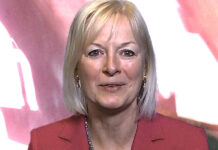STUART CAMPBELL: OUTPERFORMANCE AND AUTO-EXECUTION.
Leading the charge into electronic trading, Stuart Campbell tells The DESK how he has set up his team to prevail.
Which characteristics do trading teams need to outperform in the market today?
Being agile, adaptable and being able to pivot to the situation as it requires. An experienced trading team is able to do that. ‘Pivot’ according to the different characteristics around each individual trade – the trickier trades. These days, the real value-add in secondary trading comes in managing block trades, being able to jump on liquidity when it presents itself, and if one method is not successful then having an armoury of other routes to try. It’s piecing together the puzzle from the bits of information, piecing together clues before going out to the market.
How have you developed your team to bring out those characteristics?
We’re a bit unique in that our team is reporting through one person, myself, yet each individual is located beside the investment decision makers or portfolio managers (PMs) appropriate to their asset class. We are able to extract some of the best alpha opportunities by having the PM and the traders located beside one another. Then we also make sure that our traders are aware of the different avenues, styles of execution, and new protocols that are coming to the market; portfolio trading being a good example. My job is making sure they have the tools and they are aware of all these new protocols.
Do you have a decision tree of how to execute?
We don’t have a formal decision tree, on average the individuals on the teams have 15 years market experience each, so I can give them a long enough rein to use those years of expertise without having to formulate a structured decision tree.
Where do you see future gaps in skill and knowledge?
Technology for sure, I feel both personally and as a trading team, we have to stay aware of what is changing and what that means. To try and fill that gap we have located tech people beside us, I literally sit side-by-side, on my left and on my right, with tech people who are helping me understand changing structures in the market and changing protocols around FIX protocol communications, programming languages, automation, etc. We just have to be aware of what that could do for us. They can help us problem solve where a trader can’t.
Do you think there might be a blurring of these roles in the future?
Absolutely. If you were looking to hire people in, the obvious new thing you’re perhaps considering is Python-type skills. You would probably be looking for a blend, with some coding, or data analytics experience and – I would hope – we would be able to easily train them on the market and trading side, to bring together a trifecta of coding, data analytics and trading.
How do you see multi asset trading working in your vision of the future?
Our traders are multi-asset fixed income, so any trader has the skill set to be trading interest rate swaps, credit default swaps, FX, exchange-traded derivatives, cash bonds – each trader is qualified and experienced to do all of those things. If you are the emerging market local trader, you would be expected to be trading FX, bonds, interest rate swaps, options, that’s your skill set. And you should know that market better than anyone, therefore you are able to trade across products within that market. Also, technology from vendors is starting to make it simpler to package together trades such as pair trades or netting of duration hedges, and that evolution will continue.
How would you improve primary or secondary markets today?
If I had a wish-list of improvements, it would include consistency around book updates. Often there can be discrepancies between lead managers as to what updates they can give you, and when they can publish a book update. There is a bit of inconsistency there, not just in the content of the update but the frequency of it. More structure around it might help, so you can only give out one or two updates to the deal before you finalise and set the terms, rather than constantly revising tighter, tighter, tighter.
Also, possibly capping the amount of tightening that would be possible, from the initial price talk to the setting of the pricing of the deal. There are inefficiencies around primary where time gets spent analysing a deal only to then not participate once the deal is tight, and beyond your relative value assessment. That happens a lot, it’s extremely inefficient for us on the buy side.
You could conceptually do something radical that, once you set the initial price talk, you can then only tighten it by 10 percent of the spread. I understand there will be a lot of push-back on that, but perhaps that would save a lot of inefficiencies.
My last comment is that with the digital revolution, it would be nice if we could come to a common agreement with one primary platform that works. I would just like some resolution that we can all agree to, and move forward.
Looking at the MiFID II review, what do you think is likely to come out of that, and what would be the optimal outcome?
One thing that needs looking at is the trade reporting on some sovereigns, and Greek bonds has been one of the gaps. They are classified as liquid enough that they are reported quickly. That needs re-assessing, we don’t find that market is liquid enough that it justifies such quick or speedy reporting. Therefore, it can be damaging when trying to trade block sizes in that sovereign.
I am not sure that there is still an answer for the consolidated tape. There are pros and cons. If you think about TRACE [the US consolidated tape] its transparency is welcome, but it needs to be to the benefit of all trades, not just smaller-sized trades. I don’t think that TRACE necessarily has a great solution for block trades. It works quite well for extremely illiquid bonds that haven’t printed for quite some time, where it can be a useful benchmark. But it’s not very useful if you have sold US$10 million and you have got another US$50 million working behind it, and your first trade is published after 15 minutes. So, a consolidated tape would be welcome, but with the right waterfall structure for reporting.
Is there anything trading platforms are offering today that you would like changed in secondary markets?
There is a lot of fake news in the corporate bond space or less-liquid bond space. That often takes the form of indication-type runs. I would like to see more of a push towards the cleansing of that data. And that could be by ranking the prices based on those that work, or something similar to Bloomberg’s Magenta Line pricing. Vendors could work better with the banks at tagging runs, levels or prices that are more likely to be tradable than not tradable. That’s where we spend a lot of time worrying.
What is the biggest value-add from technology on your trading desk today?
We have had straight-through-processing for a long time, it’s certainly one of the simplest and most effective ways to free up a trader’s time. STP is a huge part of what we do. As a firm we are running about 70 per cent of our trading electronically, by number of tickets, and we would like that to continue growing.
Auto-execution (auto-ex) will become a big factor as well; we haven’t embraced it fully yet, we still have a few teething issues that we are trying to solve in-house around monitoring and control of the parameters that we set.
In my role, I am concerned about having enough transparency around certain parameters that have been created for auto-execution. I believe auto-ex will become a much bigger part of our daily workflow. That lends itself to being able to evaluate brokers’ performance more easily.
How does that improve broker evaluation?
We have a standardised template to work with; you can therefore get a better set of data on the outside. If there are always five dealers in competition, that’s a much better data set than not knowing how many dealers were in competition for each trade. Auto-ex is helping to standardise the data output, which then leads to a cleaner assessment of the analytics.
Does that require significant internal technology support?
The platforms vendors have all built complex solutions and that’s great, we work with them closely and they are delivering. Then we are working in consultation with our order management solution (OMS) provider, to look at ways where we can tag data that’s suitable for auto-ex in advance, and maybe create a standardised set of rules that can be used across platforms.
How can it help in potentially enhancing alpha, as well as boosting efficiency?
Care orders would be an obvious choice, where we can create watch lists and care orders and leave them in an inventory hub or pool, then get an alert popping up when the target is reached, or when there is activity on the other side of our trade. Technology is making that far easier. It used to be managed via phone calls; now we can rest orders in there that we know will fire if there is someone on the other side.
What’s the biggest technology trap buy-side traders face?
Believing what’s on the screens; and that goes for PMs and traders. Sometimes there is misinformation there and it can paint a false picture of what’s truly available, or what the true price would be. Also, being cognisant of all of the electronic offerings that are out there. You don’t want to miss a new offering that could be extremely valuable. For example, in recent months, with the coming SFTR regulation, the repo market has come from nowhere to be quite an electronic market place.
My role is to be the first line of defence, vetting these tech offerings that are coming in. That can present a lot of challenges. If something looks very appealing, you want to take it to the next stage, and you need to involve your IT department. You think about the cost that would be involved in implementation and whether it would sit well with the OMS? And you can lead yourself down a path; you have to spot if this is a viable option that you should be pursuing.
Do you see value in peer discussions?
Obviously, we have to be careful that we are not playing a kingmaker role, but we will have conversations with our peers and look at what’s working well. I have never seen the fixed-income buy side collaborate this much in my career. We feel that we have been released a bit, post MiFID II, to think about real solutions that offer real value and can aid the workflow or the creation of alpha. The buy side are latching onto this and we are actively collaborating.
How would you describe the trading environment today?
Trading small odd-lot, retail sizes, sub one million, has probably never been easier. Innovations like open trading allow you to ask so many counterparts for streamed RFQ prices. Auto-ex mean some trades are not even click-through. The sell side are pricing with algorithms rather than traders now.
Problems are further up the size curve, and blocks probably require more patience than ever. For that, there is certainly an education process that we have gone through in recent years, with both PMs and traders. Liquidity is not as instant as it was, when you start trading blocks.
The interesting area for me is the middle ground. Let’s call it the £5 million to £20 million corporate bond area. One argument would be that, they will get broken down into smaller pieces and traded through the algorithms, during the course of the day and traded on the odd-lot process. But if we bring in a consolidated tape, with those trades being reported constantly, that may not work in your favour and will quickly be identified with lots of similar trades flowing through the market. The most interesting challenge is on mid-size block trades and whether the algos can absorb the flow and pass thru; hopefully they can and avoid some of the multi-hitting that goes on today
Do you see any pressure from the senior management to electronify trading?
Absolutely, one of the mandates I have is to do more electronically. It’s efficient, it reduces errors, it creates a nicer audit trail. There are huge benefits there; we have fewer failed trades and booking problems in the back office, and it flows through the settlement process more seamlessly. Pushing electronic is definitely a senior management priority.
Which counterparties are performing well?
Those banks embracing algorithmic pricing are having a higher electronic success rate. We have seen a huge increase in electronic liquidity providers using automated algorithmic pricing; we trust their pricing on the stream more than banks because we think their pricing works. If you were to hit or lift the price it will quickly reset the new price, and it’s tradable again. So, it feels like a much truer picture of the market. That didn’t exist for us 12 months ago.
What are your goals for the next 12 months?
Getting more comfortable with controls around auto-ex, so that we can then start to push through a large percentage of our orders; cleaning up fake news by working with the banks and the vendors to try and identify more accurate pricing. Cleansing of that data pre trade will then hopefully result in better best execution analysis as well. We have been challenged by compliance and management on those factors, so that will certainly help the cause. Finally, we need to be very careful around CSDR, both understanding the negative potential impacts that it could have, and then as it comes into force understanding what technology we may need to have in place. It is more likely to be an operations issue than a front-office issue, around the agreement of the settlement proceeds. If you employ a third-party agent to produce a price to settle at, operations aren’t going to necessarily know if they agree with that price, so we are possibly going to need a front-to-back technology solution to help us deal with those mandatory buy-ins.
Hopefully we can do a bit of lobbying as the buy-side industry and see if there is any sort of dilution that can be achieved around that legislation, because it does worry me.
Biography:
Stuart Campbell is head of trading at BlueBay Asset Management leading a global team of 11 specialist fixed income traders. He began his trading career in 1997 with Deutsche Morgan Grenfell before joining Invesco in 2001 as a senior portfolio manager and head of fixed income trading for the institutional business in London. In 2014 he joined BlueBay and has a keen focus on improving workflows to free traders to pursue alpha opportunities. He is a regular contributor to industry think-tanks including Alphatrader, Q15, the Investment Association (IA) and Fixed Income Leaders Summits (FILS).
©Markets Media Europe 2025










